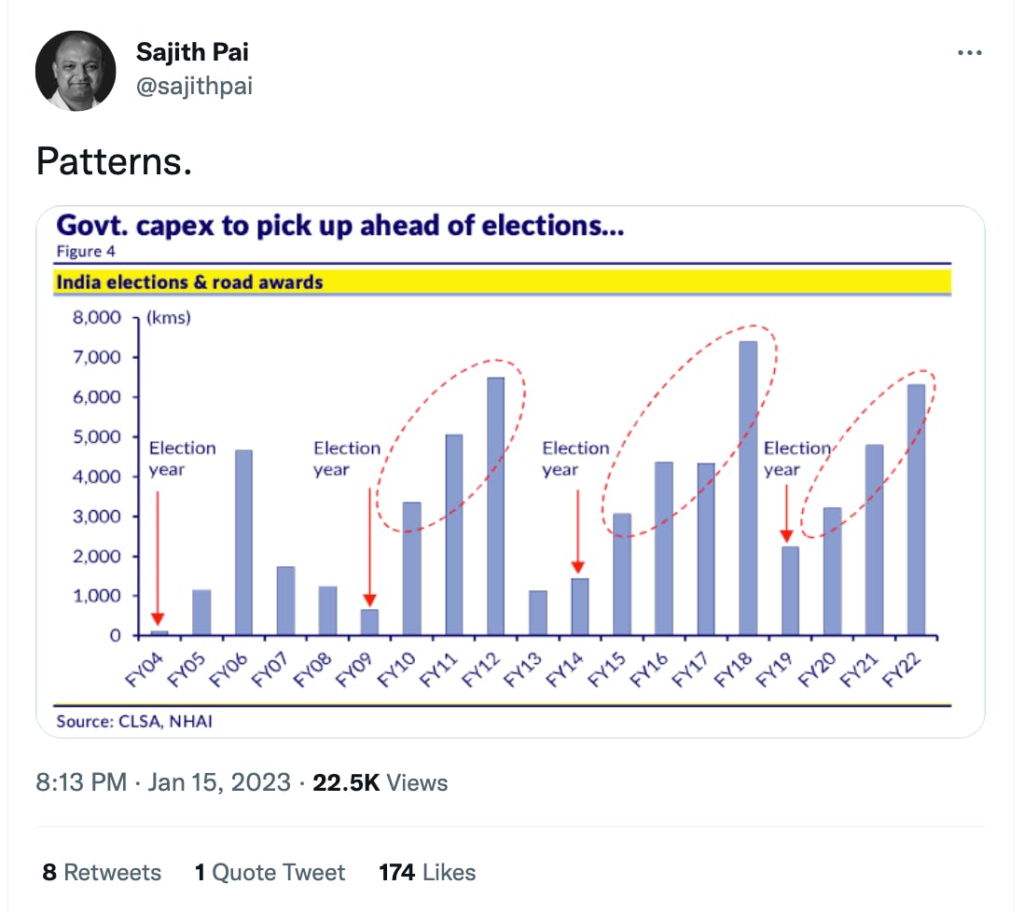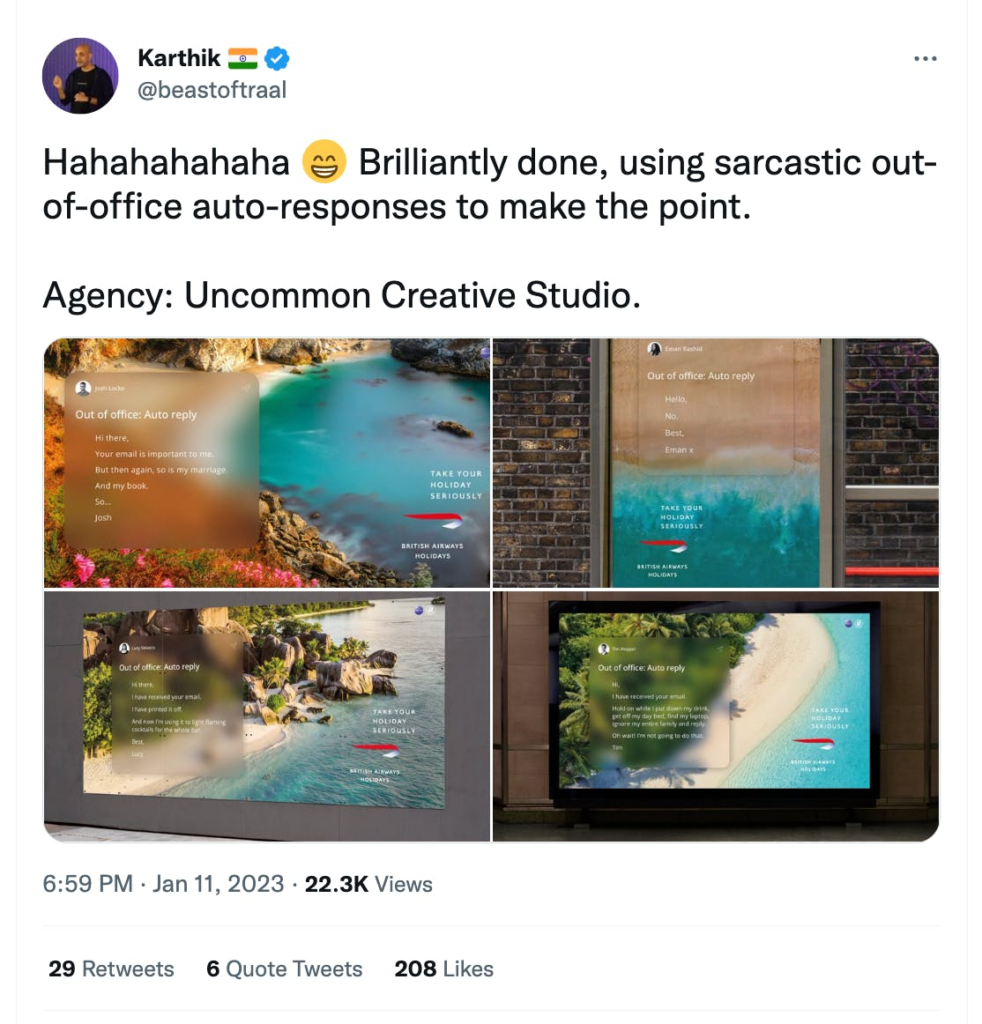The four stories CEOs need to tell at work
This week’s recommendations are heavily influenced by Sajith Pai of Blume Ventures. He recently dropped his newsletter and it had a bunch of fabulous pieces. For instance the flagship article about the three (plus one) products every startup needs to build, which also give us the four stories that need to be told.
📄 Article/s of the week
a. ‘The Three (or More) Products Founders Have to Keep in Mind’ by Sajith Pai
Sajith, arguably the foremost thinker and writer in the Indian startup ecosystem, is writing a book on the concept of Product-Market Fit (PMF). I’m sure it will be a must-read when it launches.
As preparation for the book, he is interviewing leaders on PMF and also penning his thoughts as posts – a great way to clarify one’s own thinking, elicit comments from readers and strengthen one’s arguments.
In this post (which is a part of his superb newsletter), he talks about the three kinds of products that founders need to build – apart from the core product that is targeted at customers/users:
- The Investor Product: targeted at investors
- The Content Product: targeted at the general public, future users, employees and investors
- The Internal Communication/ Culture Product: targeted at employees
To me, these are nothing but the four kinds of stories every leader needs to tell:
- The Story to Customers
- The Story to Investors
- The Story to Employees
- The Story to the General Public
Sajith then elaborates about each of these products or narratives.
For instance, the investor product:
A much less understood product is the investor product – this is essentially the narrative that you shape around your startup, aimed at investors. This includes its position in the marketscape relative to its competitors, how it is advantaged vis-à-vis them, and its growth prospects (or perceptions around its prospects).
…
Amazon is a great example of a compelling investor product. Jeff Bezos was able to sell the narrative to Wall Street that it should be valued not on its margins or profitability (which were nonexistent through the noughties) but on the fast-growing TAM of ecommerce and its high marketshare here. At the right time, he said, we will be able to take up prices and up our margins. Wall Street believed him and supported a high price / earnings (p/e) ratio, far higher than its peers. This helped Amazon weaponise its stock prices to attract talent through its rising ESOPs, as well as use its high p/e advantageously in M&A transactions.
The ‘content product’ is interesting – Sajith says that founders should start building it along with the core user product and not later as an afterthought:
The content product is the third product that a founder in this space has to worry about building. In fact the founder should focus on it simultaneous to building out the (main user) product. A key reason for that is that, content takes time to create and for distribution to build up; so instead of waiting for the main product to be ready and then start writing, it is better to start the content engine going as you decide to start coding.
The fourth product: internal comms and culture is focused on perhaps the most challenging audience to retain – employees.
…there are two other potential ‘products’ – both aimed at your most important asset, your people. One is internal communication. The other is culture.
Let us take internal communication as a product. Kevin Kwok puts it well: “Talk to top tech companies today and raising capital is ironically one of the easier aspects of building and derisking the company. Hiring and retaining a talented team is far harder. Acquiring and retaining customers is harder. Understanding and getting the team coordinated on what to build is harder.”
And then there is culture:
On to culture as a product. The canonical example here is Hubspot. This article has Dharmesh Shah, the CTO of Hubspot quoting “Culture is a product you build. And your people are its customers.”
Call them products or narratives or stories – crafting and telling these are fundamental roles of leaders.
(Also, check out this superb article that Sajith references on the importance of narrative distillation by Kevin Kwok. I was chuckling at his hilarious visuals!)
🎤 Podcast/s of the week
a. Board Room conversations with Ireena Vittal by Sid Talwar (Lightbox Ventures)
This conversation was also recommended to me courtesy Sajith’s newsletter (over-dependence much?) in which he shares extracts from several podcast conversations that he transcribes and reads.
Ireena Vittal (ex-McKinsey Partner and a senior Board advisor) is a highly respected leader in Indian boardrooms. Sajith Pai calls her “one of the well-kept secrets of the Indian business world.”
In this conversation with Sid Talwar of Lightbox Ventures a VC firm, Ireena reflects on her storied career (across Nestle, Mckinsey), her focus on product quality, her take on the challenges of scaling up consumer product businesses in India, et al.
What I liked more than the actual conversation transcript was Sajith’s Notion page in which he’s summarised his key highlights from the episode.
Below are some portions that I found thought-provoking:
Ireena’s advice to young professionals:
… never forget that you’re optimizing life at the margin. If you have … a reasonable job, you’re already in the top one percent of young people in this country. So celebrate. Be grateful and give back.
The importance of the owner investing in product quality:
Whether the owner cares and its matter of pride or not, and whether they invest in the weakest part of the supply chain is what matters to maintaining product quality.
There are millions of case studies of people who’ve got good quality out of these countries. You just need to invest capacity at the right place. So if you have a third party manufacturer, good companies will have that quality control (people) on their books, and he’s placed 100 percent of the time in the store. You don’t do the random testing of five out of a million pieces. Your guy is working in that factory through every possible shift and he’s on your books, he’s not on their books. You have a guy who’s manufacturing small screws that go into your watches. You make sure that you have quality control on the Lathe machine that they use, and you will do surprise audits. So if you look at how companies have managed, this, because don’t forget in emerging markets, a lot of supply chain is also outsourced. And despite this, managed to get great quality by ensuring they have the right specifications.
Consumer product companies in India need to be ‘schizophrenic’:
It’s fascinating to see that search has gone online and whether the searches for a cell phone or whether the searches is for baby products or for apparel, the research after research shows that almost 80-85 percent of them will search for a product and increasingly for a store that’s online. And if you don’t win in that search, then you’re not even the consideration set. But a lot of transactions still gets consummated offline. And for two to five million to go to 20 million, 30 million in terms of transacting online, I think we have to wait a bit longer.
So I have a feeling that in India, the innovation has to be almost schizophrenic, You have to win in online search, both organic and inorganic, preferably organic. But then you will need to be part of a broader fight in order to also be present, if not in five million outlets then at least in a million of them in the top 20-30 cities
The hollowing of the middle in Indian consumer products:
We have been seeing a steady hollowing of the middle in every single category because the same consumer goes for value on occasions and goes for a super premium in the same category, but nobody goes for the middle.
…so let’s assume we have a price point of 10 and 15 and 30. What you will find over time from almost 99 percent of that is that this good, better, best pricing or this range you will find in the way markets are evolving a lot and it’s in the same household, you will find that people will go for the Rs. 10 for certain occasions and people will go for the Rs.30 for certain occasions. But very few people stay in the middle at Rs.15. And so if you look at almost all categories you’re seeing simultaneous premiumization and commoditization. Often in the same household because people buy different things for different occasions. So I’m buying rice, I buy super basmati, when my boss is visiting and I buy unbranded or, you know, back in the store value brand for other occasions, I’m buying the soap. I’ll buy Dove if I have a little baby or an old mother, and I will buy a three in one value pack, but the middle is getting empty.
The questions of scale that founders grapple with:
…if you look at scaling up, scaling up is about designing, standardizing, replicating playbooks. Except that in India, you realize it’s so heterogenous that you have to cluster markets and you rarely have one playbook. You have multiple playbooks and you version control them because every six months they change.
So how do you build an organization that knows how to scale sustainably is one question that arises? The second question that arises is How do I bring all these people from many different places and all of who are very skilled, but I don’t trust them the way I trusted my dorm mates or my co-founder. And when they tell me this is how you do things in larger companies, how do I know when they’re when it’s a sign of low aspiration? And how do I know it’s a sign of deep maturity? So how do I build a team out of a groups of people? And the third one is how do I de-bias my organization against my own biases midst that I have started believing it because I’m reasonably successful and I’ve raised a ton of money.
I would highly recommend listening to this podcast, especially if you work in the consumer space in India or are part of the startup leadership team looking to scale up.
🐦 Tweets of the week
I need an answer to this!

Any guesses as to which way the column height will go in 2023?

Some hilarious copy on these ads by British Airways

For instance, take this one:

💬 Quote of the week
“Perhaps modern time travel is our ability to take a loan out from our future success to ensure we achieve it.”
– Kevin Kwok
🍿 Movie/s TV Series of the week
a. Only Murders in the Building (Hotstar)
Who would have guessed that a comic murder series headlined by a couple of 70+ year-old veteran actors and a 30-year old singer actress became the most streamed hit on Hulu…
This series is a testament to the power of writing and dialogues. There are no superstar actors, fancy locales, stunts or VFX. But the story is riveting, the dialogues hilarious and the chemistry crackling between the lead actors.
A parody of the true-crime podcasts, Only Murders in the Building is a highly recommended watch.
📺 Video/s of the week
a. Pratibha’s Birthday Party by Aiyyo Shraddha (3:54)
Mrs. Kulkarni is back and delightfully so! In this laugh-out-loud sketch, Shraddha parodies the children’s birthday party (and musical instrument classes, among other tropes) in an upper-middle-class Maharashtrian household in Pune.
Her razor sharp writing, on-point expressions and that delightful Maharastrian accent – uff, what a talent.
That’s it folks: my recommended reads, listens and views for the week.
Photo by Mikael Blomkvist: https://www.pexels.com/photo/a-man-in-yellow-shirt-6476788/







